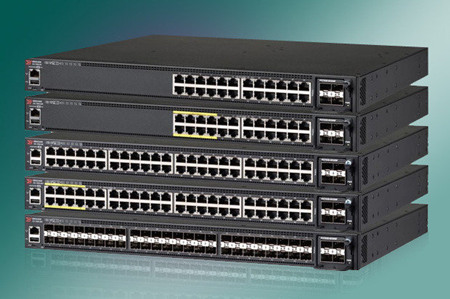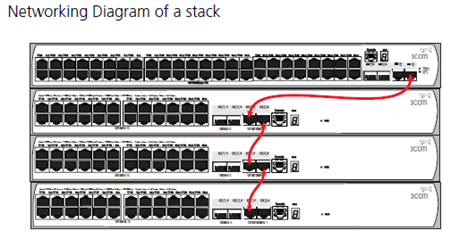Up to now, there are three types of switching solutions: standalone, stacked, and chassis. According to researches, stackable Gigabit switches have been warmly welcomed by large data center, enterprise network and home networking over the years. Lots of Ethernet users intend to choose a stacked switching solution rather than standalone and chassis switching solutions. So what are the reasons behind this kind of preference? This article would provide a satisfied answer for you.
Simplified management is the paramount advantage for all stacking. Before stacking came along, you had to attach multiple switches together and configure them separately by logging in with a different IP address one by one. As you may know or can imagine, this was a super tedious process. When stacking switches, they all share the same IP address and can be configured as one unit. Instead of looking like multiple separate switches, the solution actually looks like one switch with a larger amount of ports. In the following part, we would further analyze the merits of stackable switching solution.

In this text, we would mainly demonstrate the benefits of stacking switches from the aspect of simplicity, scalability, and flexibility.
For environments where a combination of different port speed and media types are needed, such as a mix of copper gigabit Ethernet and fiber gigabit or 10 gigabit, stackable switches make this possible without needed independent switches or use of a large, perhaps oversized, chassis. We can add ports as we need them by simply purchasing another switch and adding it to the stack.

We can stack up to nine 3750-X switches and have 432 x 10/100/1000 ports and 18 x 10 Gbps ports. We can do this using only 9RU’s of rack space. A chassis would require over double the rack space to achieve this access port density. This makes these switches very popular as top-of-rack switches in the data center.
For resiliency, devices like servers, downstream switches, or other important devices can be connected via EtherChannel to the stack, with the ports in the EtherChannel spread across multiple switches in the stack. This setup allows for a failure of a switch in the stack with minimal forwarding interruption and any connected hosts still active with only a performance loss.
A stack of Ethernet managed switches appears to the operator and the rest of the network as one single switch, making it easier to manage and configure. Newer switch models add stateful failover capability, providing similar behavior as a chassis with dual supervisors in case of a failure or the need to update software on the stack.
This article mainly explained the reasons of people’s preference for stacking network switches from three points—simplicity, scalability, and flexibility. When you are looking for a stacking switch, there are some questions you need to consider. How many switches can go into a stack? How far apart can they be stacked? What is the speed of the backplane? What technologies do you need and what can the switch be stacked with? All of these points attach great importance to your stacking switches. And thus, please take a careful consideration before you buy a stacking switch.








 本文探讨了堆叠式交换机解决方案相对于独立式和机箱式交换机的优点,重点介绍了其在简化管理、扩展性和灵活性方面的优势。通过堆叠技术,多个交换机可以作为一个统一设备进行管理,提供更高效的数据中心、企业网络和家庭网络部署。
本文探讨了堆叠式交换机解决方案相对于独立式和机箱式交换机的优点,重点介绍了其在简化管理、扩展性和灵活性方面的优势。通过堆叠技术,多个交换机可以作为一个统一设备进行管理,提供更高效的数据中心、企业网络和家庭网络部署。

















 被折叠的 条评论
为什么被折叠?
被折叠的 条评论
为什么被折叠?








